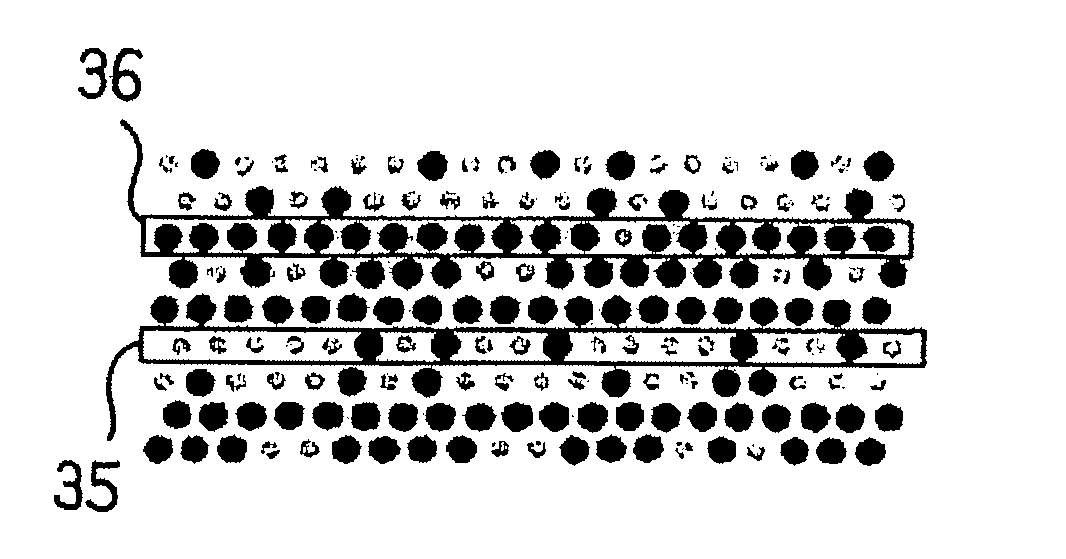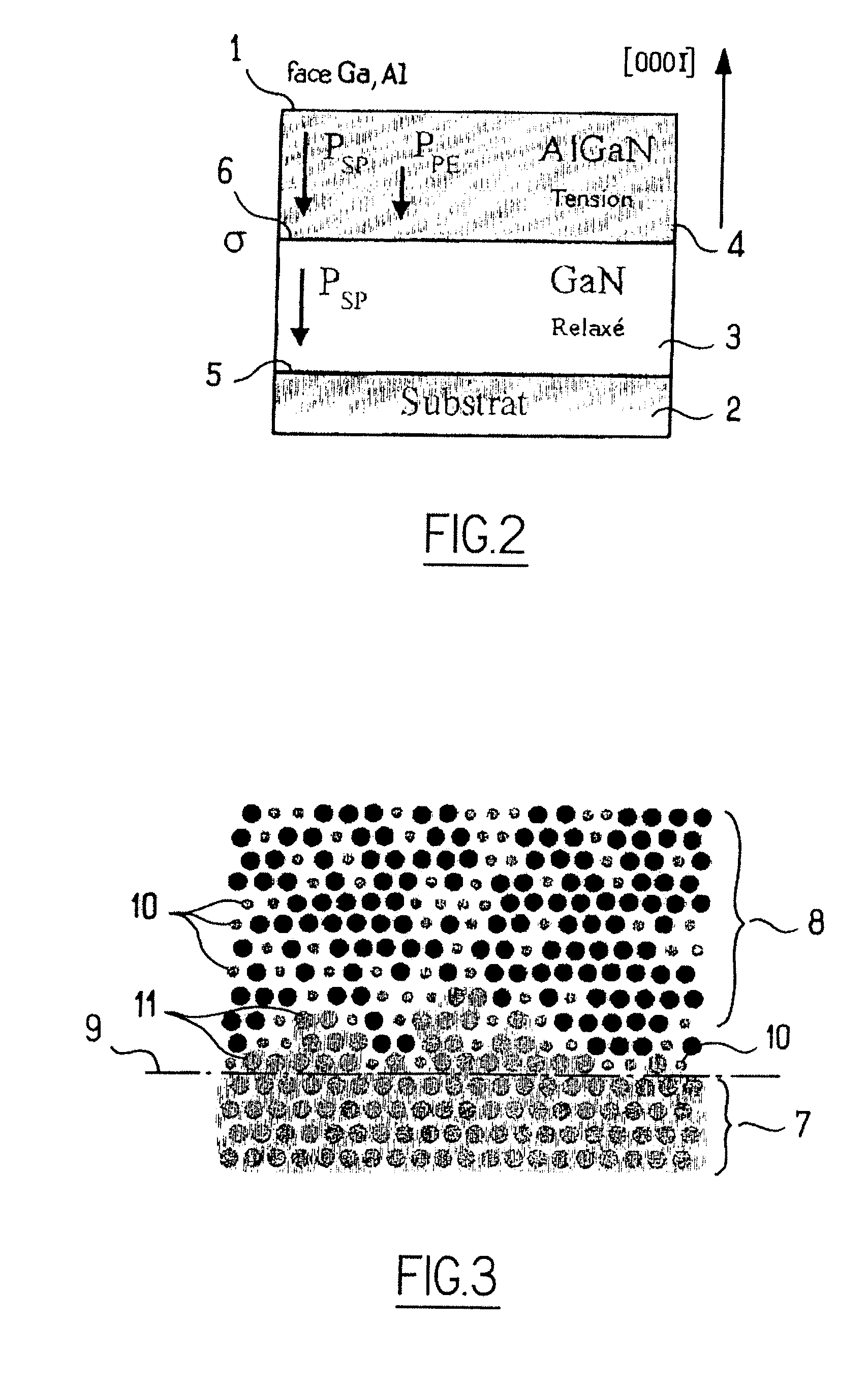HEMT piezoelectric structures with zero alloy disorder
a piezoelectric structure and alloy disorder technology, applied in the field of manufacturing semiconductor substrates, can solve the problems of non-homogeneous distribution of ga and al atoms in the barrier layer, the reliability of transistor structures made on the semiconductor material, and the reliability of the structure of the semiconductor material. achieve the effect of high-quality piezoelectric properties
- Summary
- Abstract
- Description
- Claims
- Application Information
AI Technical Summary
Benefits of technology
Problems solved by technology
Method used
Image
Examples
first embodiment
[0089]FIG. 7a illustrates a semiconductor structure 50 according to the invention. This semiconductor structure 50 comprises a channel layer 51 on a support 52, and a barrier layer 53 made of a ternary pseudo-alloy on the channel layer 51. The support 52 is made of SiC. However, the support could be made of other materials such as Silicon, AlN, sapphire or GaN. The channel layer 51 is a binary alloy of GaN. However, another material could have been chosen for the channel layer 51, such as AlN, BN (boron nitride) or InN (indium nitride). The channel layer 51 is deposited on the support by a method known to those skilled in the art such as Molecular Beam Epitaxy (MBE) or Metal-Organic Chemical Vapor Deposition (MOVD) method.
[0090] The barrier layer 53 is a ternary pseudo-alloy of AlGaN. The barrier layer 53 comprises binary alloy layers of GaN 54 and binary alloy layers of AlN 55. The GaN and AlN layers are supplied in an alternating fashion. Each binary alloy layer made of GaN 54 (or...
fourth embodiment
[0117]FIG. 7d illustrates a semiconducting material according to a This semiconducting material includes a support 52, a buffer layer 56, a channel layer 51 and a barrier layer 53. In this embodiment, the buffer layer 56 is a ternary pseudo-alloy of AlGaN composed of alternating layers of binary alloy of GaN 57 and binary alloy of AlN 58. The buffer layer 56 has the same characteristics as the ternary pseudo-alloy barrier layer (nGaN and nAlN between 1 and 40, preferably between 1 and 20, and even more preferably between 2 and 10 and possibly varying along the buffer layer, etc.).
[0118] In this embodiment, the buffer layer 56 comprises two GaN layers 57 alternating with two AlN layers 58. Furthermore, the number of atomic monolayers nGaN per GaN layer 57 varies along the buffer layer 56. The GaN layer 57 closest to the support comprises two atomic monolayers while the GaN layer furthest from the support comprises four atomic monolayers. The number of atomic monolayers nAlN per AlN ...
PUM
 Login to View More
Login to View More Abstract
Description
Claims
Application Information
 Login to View More
Login to View More - R&D
- Intellectual Property
- Life Sciences
- Materials
- Tech Scout
- Unparalleled Data Quality
- Higher Quality Content
- 60% Fewer Hallucinations
Browse by: Latest US Patents, China's latest patents, Technical Efficacy Thesaurus, Application Domain, Technology Topic, Popular Technical Reports.
© 2025 PatSnap. All rights reserved.Legal|Privacy policy|Modern Slavery Act Transparency Statement|Sitemap|About US| Contact US: help@patsnap.com



